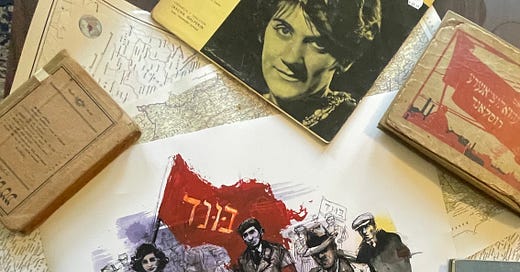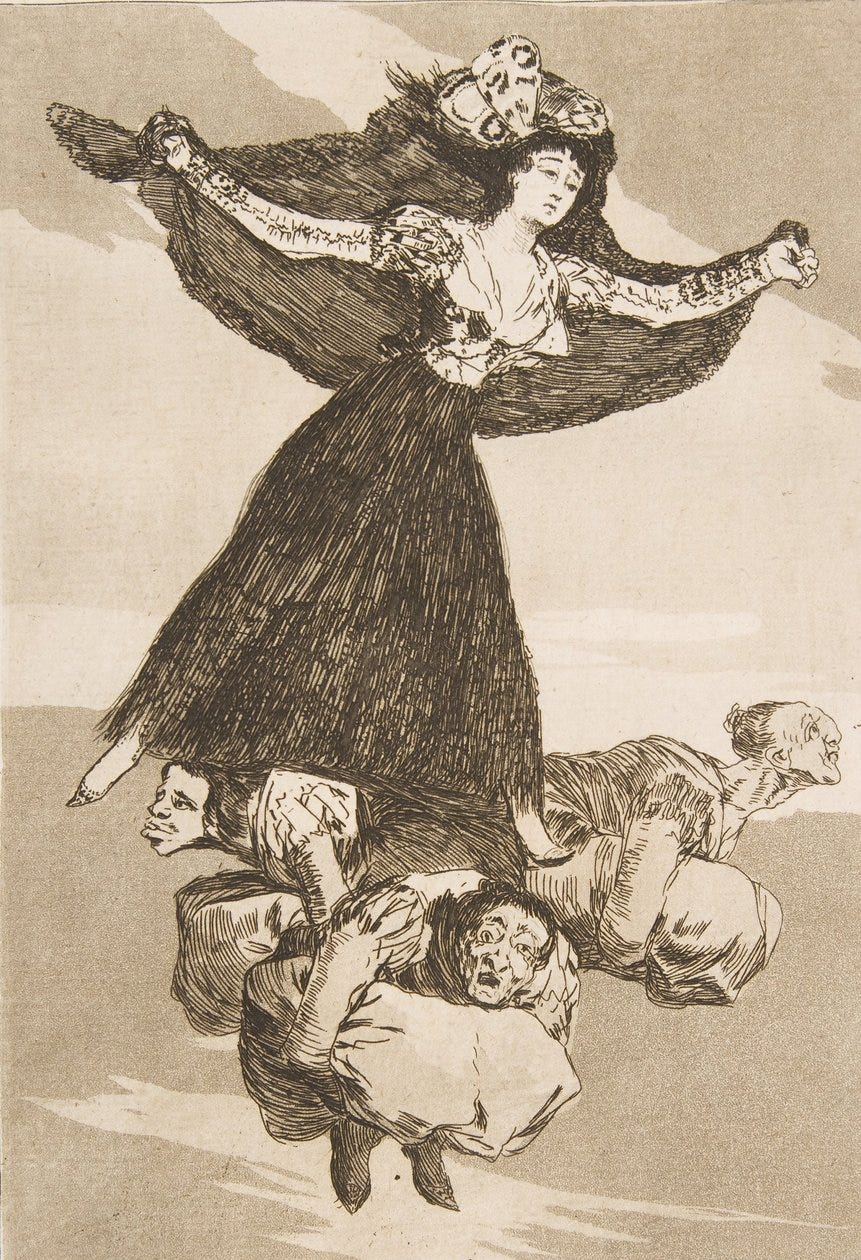First, a small bit of housekeeping. Thank you to everyone who has bought my prints as gifts for the holidays. If you want your print by Christmas, order by 3pm today (which is when my assistant Vee and I haul everything to the post office.)
Ever since I was a little girl, I was obsessed with Francisco de Goya. Blame my mother, an illustrator herself, who gave me fat art, lucious books in which Los Caprichos featured prominently. I loved the man’s hallucinatory excess, the dunces, flying majas, carivalesque mobs and hooting owl beasts that led him to retract the print portfolio from the market, in fear of being burnt alive by the Catholic Church. But above all I loved the line.
How did he make the lines look like that?
I read the captions. Copperplate etching. Intaglio. Aquatint. But what the fuck did these terms mean. My substandard and truncated art education at the Fashion Institute of Technology gave me no actual experience with printing. Instead, I tried to mimic his perfect pen skills with a crow quill. As if.
This year, I finished Here Where We Live is Our Country: The Story of the Jewish Labor Bund (no word on pub date yet). As a present to myself, I decided to learn to work in the manner of old Goya, and I signed up for etching classes at Robert Blackburn Studio.
To do an etching, each plate is treated with a chemical mix called “hard ground”. You scratch each drawing onto the plate with a needle.
The needle is not a forgiving medium. Any mark is there forever. Unlike the flexible nib of a crowquill, my preferred implement, the needle has no give, no wobble, no vibe. To do a black, you have to scratch a million little lines, one next to the other.
Then, once you finish the drawing, you dip your plate into acid, letting the chemicals burn your lines into the copper forever. After an hour, you wash off your plate with lye, then with more chemicals, then scrub it with ink, then run it through a press. The presses at Robert Blackburn all have pet names. Cupcake. Cranky Wobbles. Big Momma.
The first time I peeled back my paper from the plate, I felt the most insane rush of understanding. That’s how Goya did it. The miniscule lines. The clouds of grey. The darks, speckled with lights like occasional stars. Try walking in another man’s footsteps, they say. Try using the recalcitrant tools of another creator if you want to understand them.
So far, I’ve done two etchings, in this crazy old school method. If the goal of the tech bosses is to remove friction (or so they say), then archaic methods like Goya are nothing but.
You cut up your hands bevelling the edges of your copper. You get callouses on your fingers etching in the lines. You smear and burn and fuck up endlessly but what you get at the end is finer than the product of the finest banner printer. Every line sings. Even the bad ones. They were all made by the human hand.
Buy one of my etchings to support me learning these archaic techniques.












These are stunning!
Goya's been my favourite since forever. The man had about six entirely different artistic careers (including inventing war reportage long before photography). The Robert Hughes biography is excellent if you haven't already come across it.